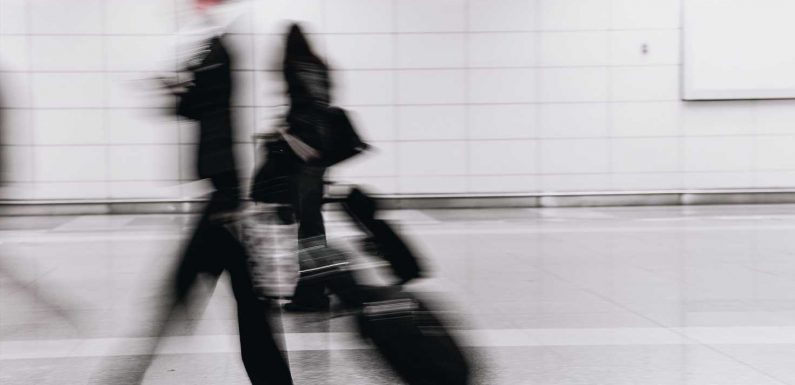
On October 1, 2020, more than 15,000 flight attendants faced an uncertain future. With CARES Act aid running out for airlines, thousands of flight attendants at United Airlines and American Airlines were involuntarily furloughed, alongside pilots, airport operations, maintenance, and catering employees. The move kicked them all off payroll and many off company health insurance, all amid the ongoing COVID-19 pandemic.
“It was extremely difficult—I was in limbo,” says Amanda Steinbrunn, a Chicago-based flight attendant and member of the Association of Flight Attendants-CWA union. “I had to figure out, am I going to be able to survive unemployment? Do I start driving Uber in the meantime? Do I have to wake up to reality and leave this job behind?”
For Steinbrunn, a six-year flight attendant who grew up traveling in a military family, giving up on her job felt like a last-ditch an option. “This is my career, and this is something I’m going to do for the rest of my life,” she says. In the meantime, she filed for unemployment, hoped for a stimulus bill and a call back to work, and tried to stay healthy without the protection of the airline’s health insurance. (Furloughed employees could apply for health care under COBRA, but still had to pay contributions, without earning a paycheck.)
While involuntary furlough affected many flight attendants, others, like Brittany Riley, an AFA-CWA member, took unpaid leave—or a voluntary furlough—in an effort to save those health benefits. In this case, employees who opted for the furlough keep access to companies’ health care, while still losing all pay.
“I had to make a decision whether or not I wanted to be involuntary or take the leap and save my benefits for my family, because my husband [also a flight attendant] is more junior and we knew he was going to be below the safe line,” Riley says. “So we chose to volunteer furlough for me. For us, keeping health insurance, especially during a pandemic, was one of the most important safety measures that we could take.”
Riley also moved in with extended family in Denver with her husband, two sons, and stepdaughter in an effort to save money, borrowing from their 401ks and pulling from savings to make ends meet with both salaries on hold. “We’ve been struggling,” she says.
Then, on December 27, the federal government came through, with the president signing a relief bill that included $15 billion earmarked for airlines to bring back furloughed workers. Steinbrunn, Riley, and her husband have all been recalled by their airlines.
“I’m a pretty emotional person and I cried when I found out that we were getting called back—especially after putting in work to support the Payroll Support Program extension alongside the union,” says Riley. “It felt like I got my wings back, like a weight had been lifted.”
Getting back in the air, though, hasn’t been easy. “It isn’t like a switch flips and we can walk back on the job,” says Steinbrunn. Flight attendants are required to pass annual FAA trainings to keep them up-to-date on security protocols, evacuation techniques, and emergency aid, like CPR. Steinbrunn’s certification expired in December, just before the bill was passed. Riley’s expires at the end of February, and she’ll have to be retrained alongside hundreds of other flight attendants before then.
“Many of us are going to have to wait a little bit longer to be able to go back, work fully, and make our regular salaries because we aren’t qualified [to fly] anymore,” says Steinbrunn. “But at least we know we have our health care, are going to be able to provide a little bit for our families, and get off the unemployment line.”
In-person trainings are also trickier right now, due to the pandemic, requiring smaller class sizes, which slows down the return to onboard service. “It’s kind of like a hurry up and wait situation,” says Riley.
This isn’t the end of the journey for many flight attendants’ stress: This latest emergency funding only requires airlines to keep those employees on payroll until March 31. Come April 1, many of the previously furloughed flight attendants will be facing the same problems as six months before. “On April 1, many of us could be losing our health insurance again, and possibly having to go back to unemployment lines and food banks,” says Steinbrunn. “For me, I’ll need to decide if it’s time to move on—or at least find something that will give me health care for the time being.”
We’re reporting on how COVID-19 impacts travel on a daily basis. Find all of our coronavirus coverage and travel resources here.
Source: Read Full Article










